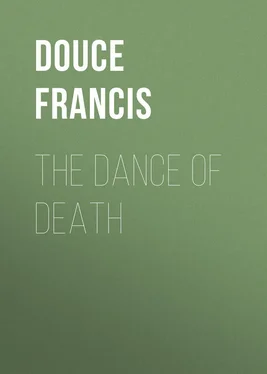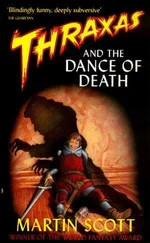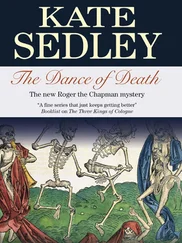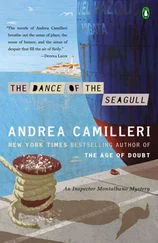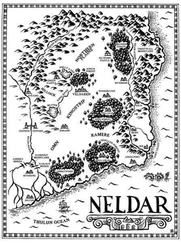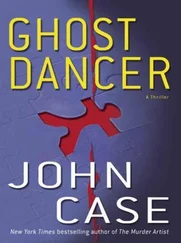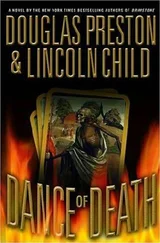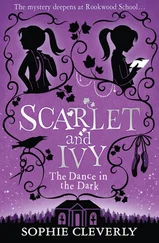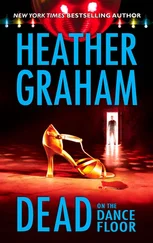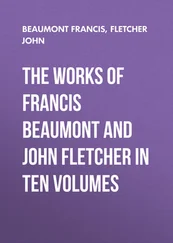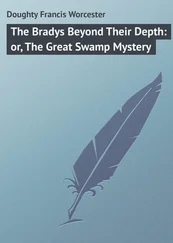Francis Douce - The Dance of Death
Здесь есть возможность читать онлайн «Francis Douce - The Dance of Death» — ознакомительный отрывок электронной книги совершенно бесплатно, а после прочтения отрывка купить полную версию. В некоторых случаях можно слушать аудио, скачать через торрент в формате fb2 и присутствует краткое содержание. Жанр: foreign_antique, foreign_prose, на английском языке. Описание произведения, (предисловие) а так же отзывы посетителей доступны на портале библиотеки ЛибКат.
- Название:The Dance of Death
- Автор:
- Жанр:
- Год:неизвестен
- ISBN:нет данных
- Рейтинг книги:5 / 5. Голосов: 1
-
Избранное:Добавить в избранное
- Отзывы:
-
Ваша оценка:
- 100
- 1
- 2
- 3
- 4
- 5
The Dance of Death: краткое содержание, описание и аннотация
Предлагаем к чтению аннотацию, описание, краткое содержание или предисловие (зависит от того, что написал сам автор книги «The Dance of Death»). Если вы не нашли необходимую информацию о книге — напишите в комментариях, мы постараемся отыскать её.
The Dance of Death — читать онлайн ознакомительный отрывок
Ниже представлен текст книги, разбитый по страницам. Система сохранения места последней прочитанной страницы, позволяет с удобством читать онлайн бесплатно книгу «The Dance of Death», без необходимости каждый раз заново искать на чём Вы остановились. Поставьте закладку, и сможете в любой момент перейти на страницу, на которой закончили чтение.
Интервал:
Закладка:
Bruckmann, in his Epistolæ Itinerariæ, vol. v. Epist. xxxii. describes several churches and other religious buildings at Vienna, and among them the monastery of the Augustinians, where, he says, there is a painting of a house with Death entering one of the windows by a ladder.
In the same letter he describes a chapel of Death in the above monastery, which had been decorated with moral paintings by Father Abraham à St. Clara, one of the monks. Among these were, 1. Death demolishing a student. 2. Death attacking a hunter who had just killed a stag. 3. Death in an apothecary’s shop, breaking the phials and medicine boxes. 4. Death playing at draughts with a nobleman. 5. Harlequin making grimaces at Death. A description of this chapel, and its painting was published after the good father’s decease. Nuremberg, 1710, 8vo.
The only specimen of it in Holland that has occurred on the present occasion is in the celebrated Orange-Salle , which constitutes the grand apartment of the country seat belonging to the Prince of Orange in the wood adjacent to the Hague. In three of its compartments, Death is represented by skeletons darting their arrows against a host of opponents. 76 76 Dr. Cogan’s Tour to the Rhine, ii. 127.
Nor has Italy furnished any materials for the present essay. Blainville has, indeed, described a singular and whimsical representation of Death in the church of St. Peter the Martyr, at Naples, in the following words. “At the entrance on the left is a marble with a representation of Death in a grotesque form. He has two crowns on his head, with a hawk on his fist, as ready for hunting. Under his feet are extended a great number of persons of both sexes and of every age. He addresses them in these lines:
Eo sò la morte che caccio
Sopera voi jente mondana,
La malata e la sana,
Di, e notte la percaccio;
Non fugge, vessuna intana
Per scampare dal mio laczio
Che tutto il mondo abbraczio,
E tutta la jente humana
Perchè nessuno se conforta,
Ma prenda spavento
Ch’eo per comandamento
Di prender à chi viene la sorte.
Sia vi per gastigamento
Questa figura di morte,
E pensa vie di fare forte
Tu via di salvamento.
Opposite to the figure of Death is that of a man dressed like a tradesman or merchant, who throws a bag of money on a table, and speaks thus:
Tutti ti volio dare
Se mi lasci scampare.
To which Death answers:
Se mi potesti dare
Quanto si pote dimandare
Non te pote scampare la morte
Se te viene la sorte. 77 77 Travels, iii. 328, edit. 4to.
It can hardly be supposed that this subject was not known in Spain, though nothing relating to it seems to have been recorded, if we except the poem that has been mentioned in p. 25, but no Spanish painting has been specified that can be called a regular Macaber Dance. There are grounds, however, for believing that there was such a painting in the cathedral of Burgos, as a gentleman known to the author saw there the remains of a skeleton figure on a whitewashed wall.
CHAPTER IV
Macaber Dance in England. – St. Paul’s. – Salisbury. – Wortley Hall. – Hexham. – Croydon. – Tower of London. – Lines in Pierce Plowman’s Vision supposed to refer to it.
We are next to examine this subject in relation to its existence in our own country. On the authority of the work ascribed to Walter de Mapes, already noticed in p. 24, it is not unreasonable to infer that paintings of the Macaber Dance were coeval with that writer, though no specimens of it that now remain will warrant the conclusion. We know that it existed at Old Saint Paul’s. Stowe informs us that there was a great cloister on the north side of the church, environing a plot of ground, of old time called Pardon church-yard. He then states, that “about this cloyster was artificially and richly painted the Dance of Machabray, or Dance of Death, commonly called the Dance of Paul’s: the like whereof was painted about St. Innocent’s cloyster at Paris: the meters or poesie of this dance were translated out of French into English, by John Lidgate, Monke of Bury, the picture of Death leading all estates; at the dispence of Jenken Carpenter in the reigne of Henry the Sixt.” 78Lydgate’s verses were first printed at the end of Tottell’s edition of the translation of his Fall of Princes, from Boccaccio, 1554, folio, and afterwards, in Sir W. Dugdale’s History of St. Paul’s cathedral. 79In another place Stowe records that “on the 10th April, 1549, the cloister of St. Paul’s church, called Pardon church-yard, with the Dance of Death, commonly called the Dance of Paul’s, about the same cloister, costly and cunningly wrought, and the chappel in the midst of the same church-yard, were all begun to be pulled down.” 80This spoliation was made by the Protector Somerset, in order to obtain materials for building his palace in the Strand. 81
The single figure that remained in the Hungerford chapel at Salisbury cathedral, previously to its demolition, was formerly known by the title of “Death and the Young Man,” and was, undoubtedly, a portion of the Macaber Dance, as there was close to it another compartment belonging to the same subject. In 1748, a print of these figures was published, accompanied with the following inscription, which differs from that in Lydgate. The young man says:
Alasse Dethe alasse a blesful thyng thou were
Yf thou woldyst spare us yn ouwre lustynesse.
And cum to wretches that bethe of hevy chere
Whene thay ye clepe to slake their dystresse
But owte alasse thyne own sely selfwyldnesse
Crewelly werneth me that seygh wayle and wepe
To close there then that after ye doth clepe.
Death answers:
Grosless galante in all thy luste and pryde
Remembyr that thou schalle onys dye
Deth schall fro thy body thy sowle devyde
Thou mayst him not escape certaynly
To the dede bodyes cast down thyne ye
Beholde thayme well consydere and see
For such as thay ar such shalt thou be.
This painting was made about the year 1460, and from the remaining specimen its destruction is extremely to be regretted, as, judging from that of the young gallant, the dresses of the time would be correctly exhibited.
In the chapel at Wortley Hall, in Gloucestershire, there was inscribed, and most likely painted, “an history and Daunce of Deathe of all estatts and degrees.” This inscribed history was the same as Lydgate’s, with some additional characters. 82From a manuscript note by John Stowe, in his copy of Leland’s Itinerary, it appears that there was a Dance of Death in the church of Stratford upon Avon: and the conjecture that Shakespeare, in a passage in Measure for Measure, might have remembered it, will not, perhaps, be deemed very extravagant. He there alludes to Death and the fool, a subject always introduced into the paintings in question. 83
On the upper part of the great screen which closes the entrance to the choir of the church at Hexham, in Northumberland, are the painted remains of a Dance of Death. 84These consist of the figures of a pope, a cardinal, and a king, which were copied by the ingenious John Carter, of well-deserved antiquarian memory.
Vestiges of a Macaber Dance were not long since to be traced on the walls of the hall of the Archiepiscopal palace at Croydon, but so much obscured by time and neglect that no particular compartment could be ascertained.
The tapestries that decorated the walls of palaces, and other dwelling places, were sometimes applied in extension of this moral subject. In the tower of London, the original and most ancient seat of our monarchs, there was some tapestry with the Macaber Dance. 85
Читать дальшеИнтервал:
Закладка:
Похожие книги на «The Dance of Death»
Представляем Вашему вниманию похожие книги на «The Dance of Death» списком для выбора. Мы отобрали схожую по названию и смыслу литературу в надежде предоставить читателям больше вариантов отыскать новые, интересные, ещё непрочитанные произведения.
Обсуждение, отзывы о книге «The Dance of Death» и просто собственные мнения читателей. Оставьте ваши комментарии, напишите, что Вы думаете о произведении, его смысле или главных героях. Укажите что конкретно понравилось, а что нет, и почему Вы так считаете.
